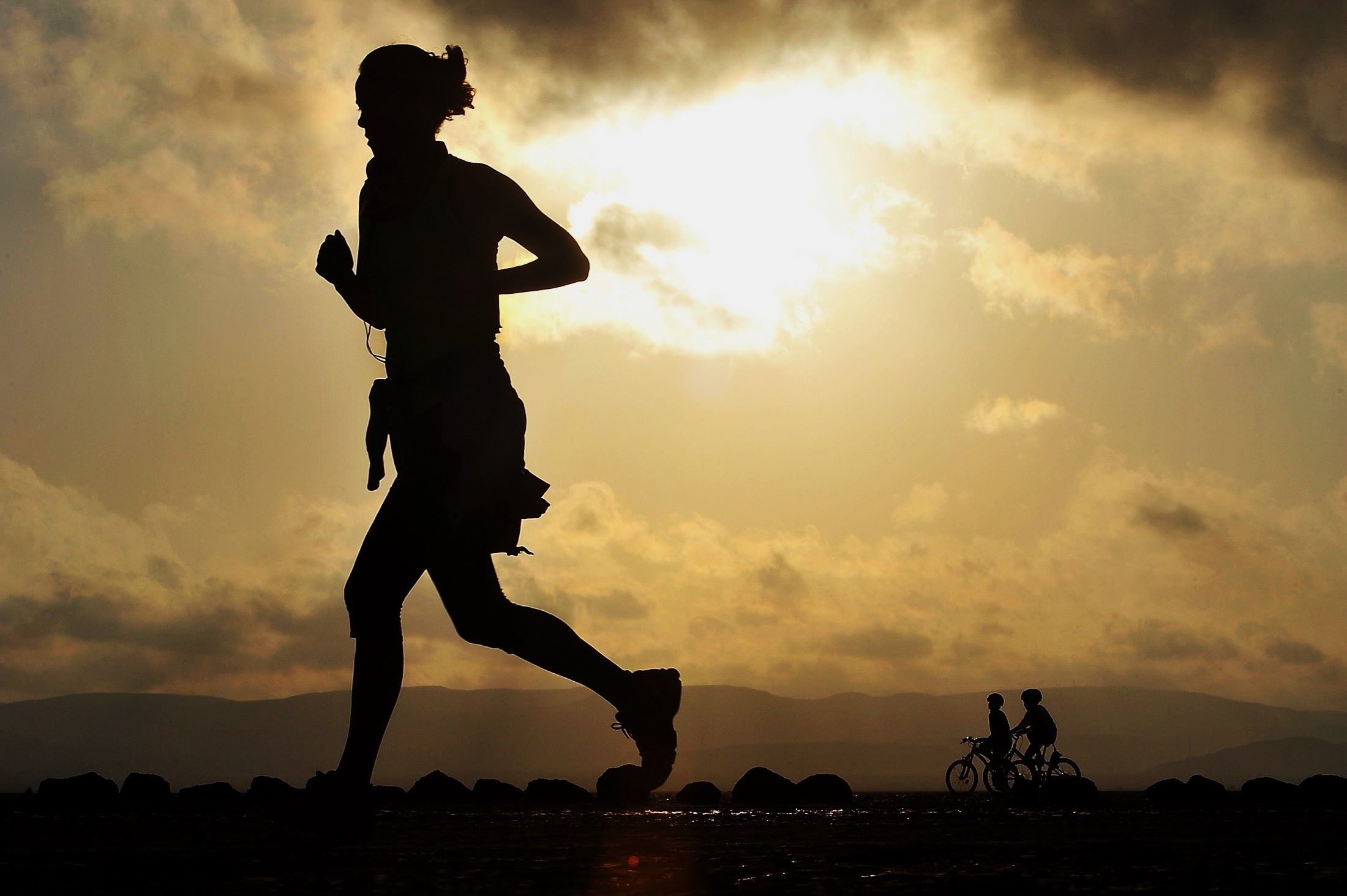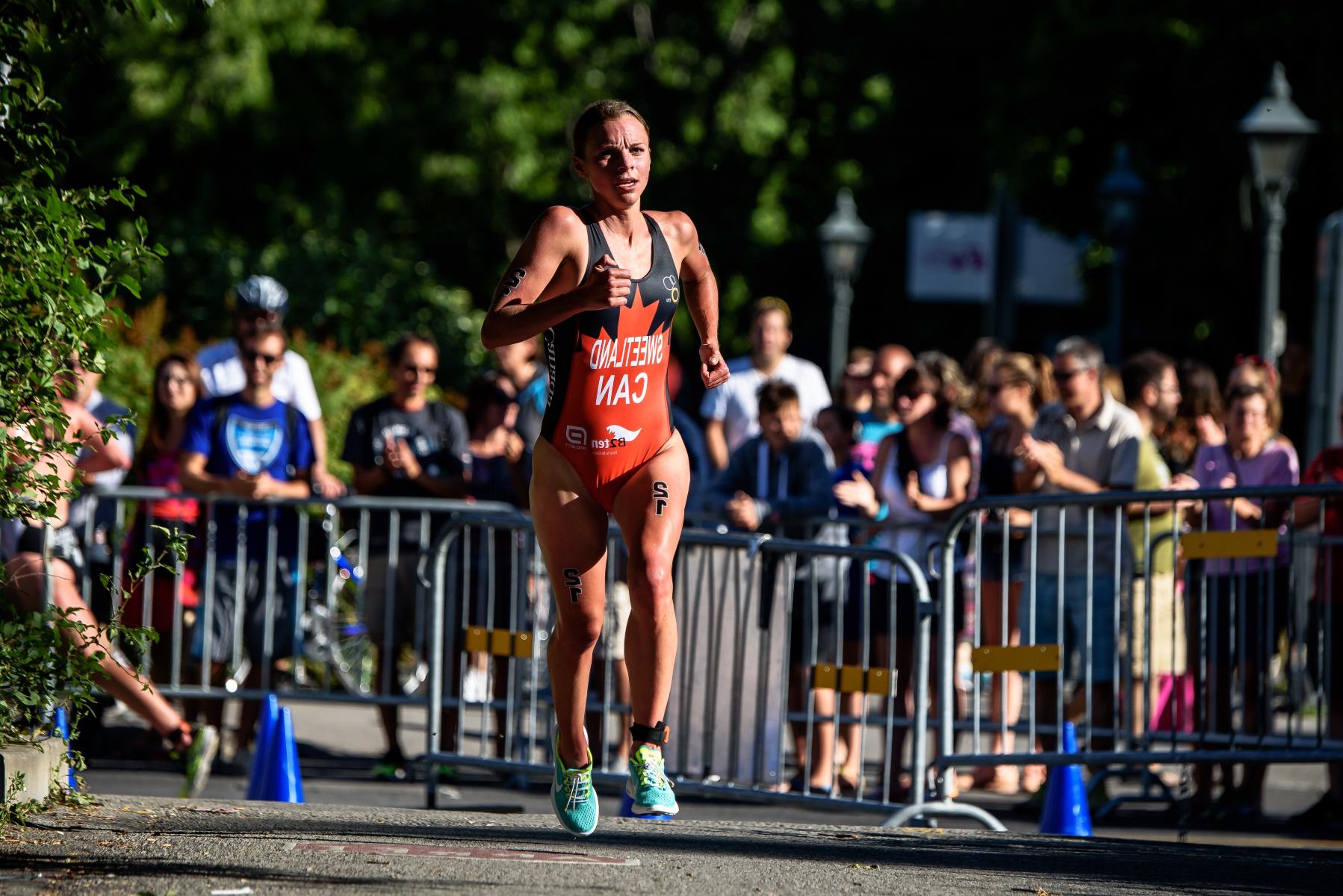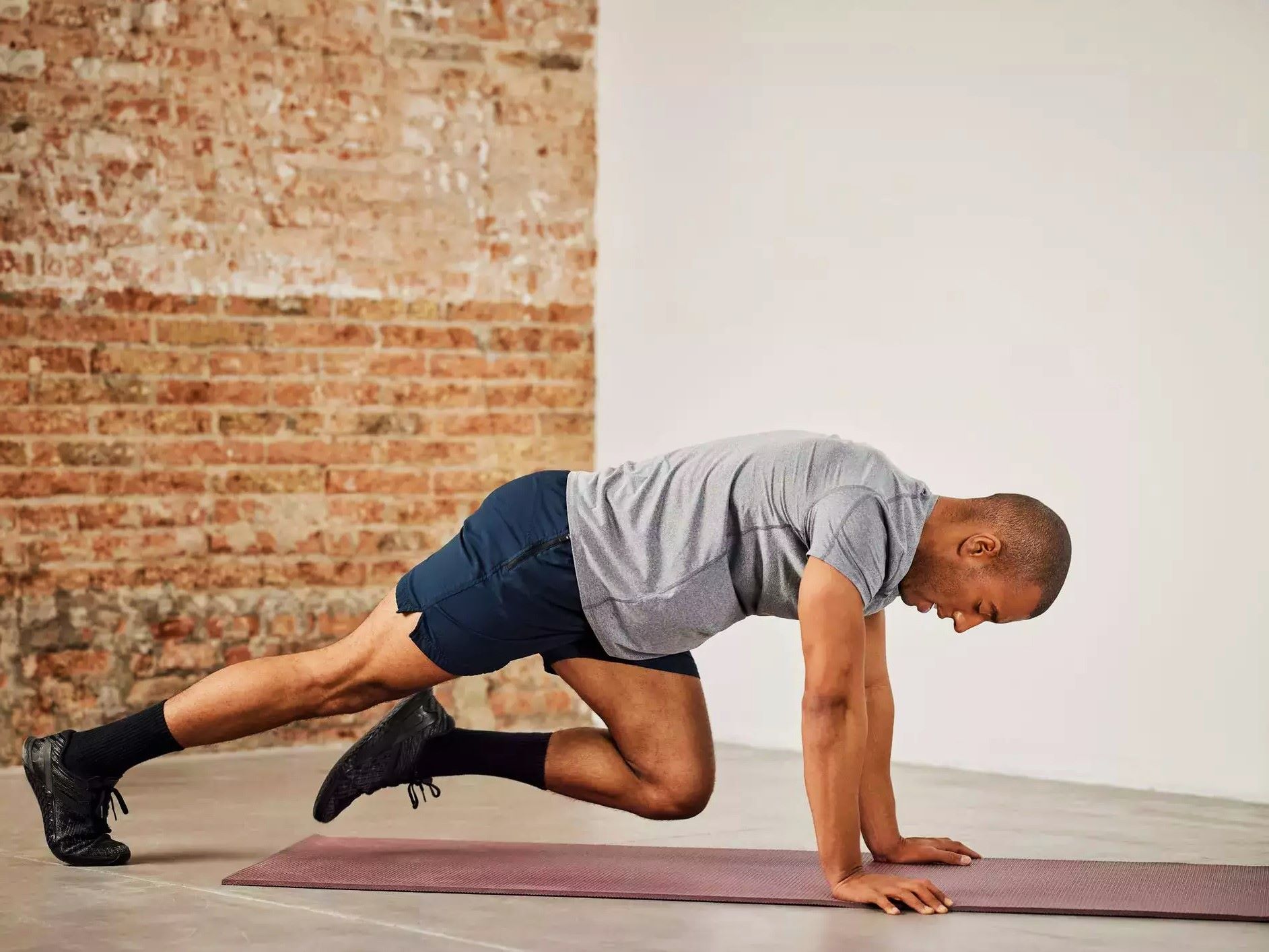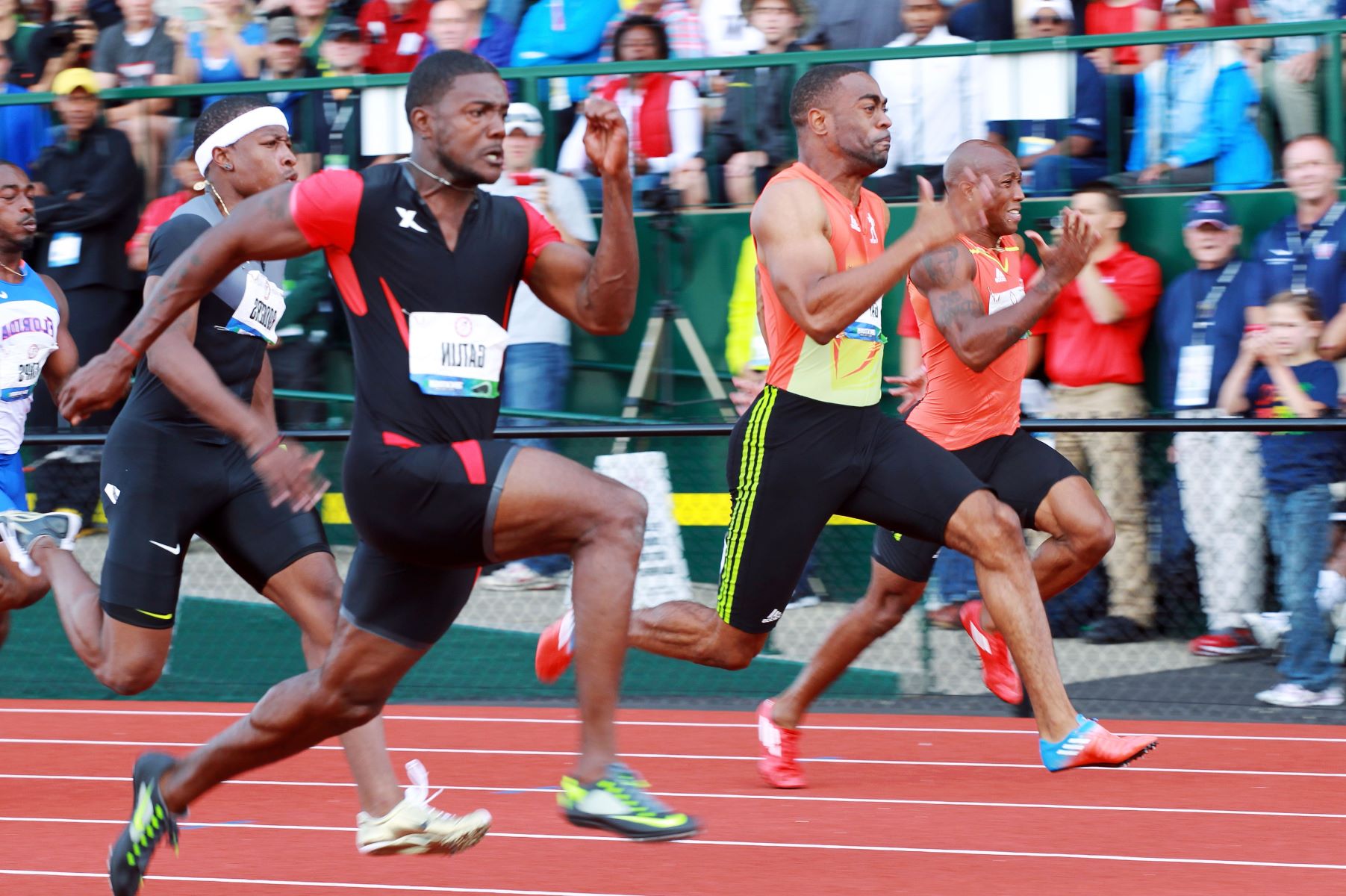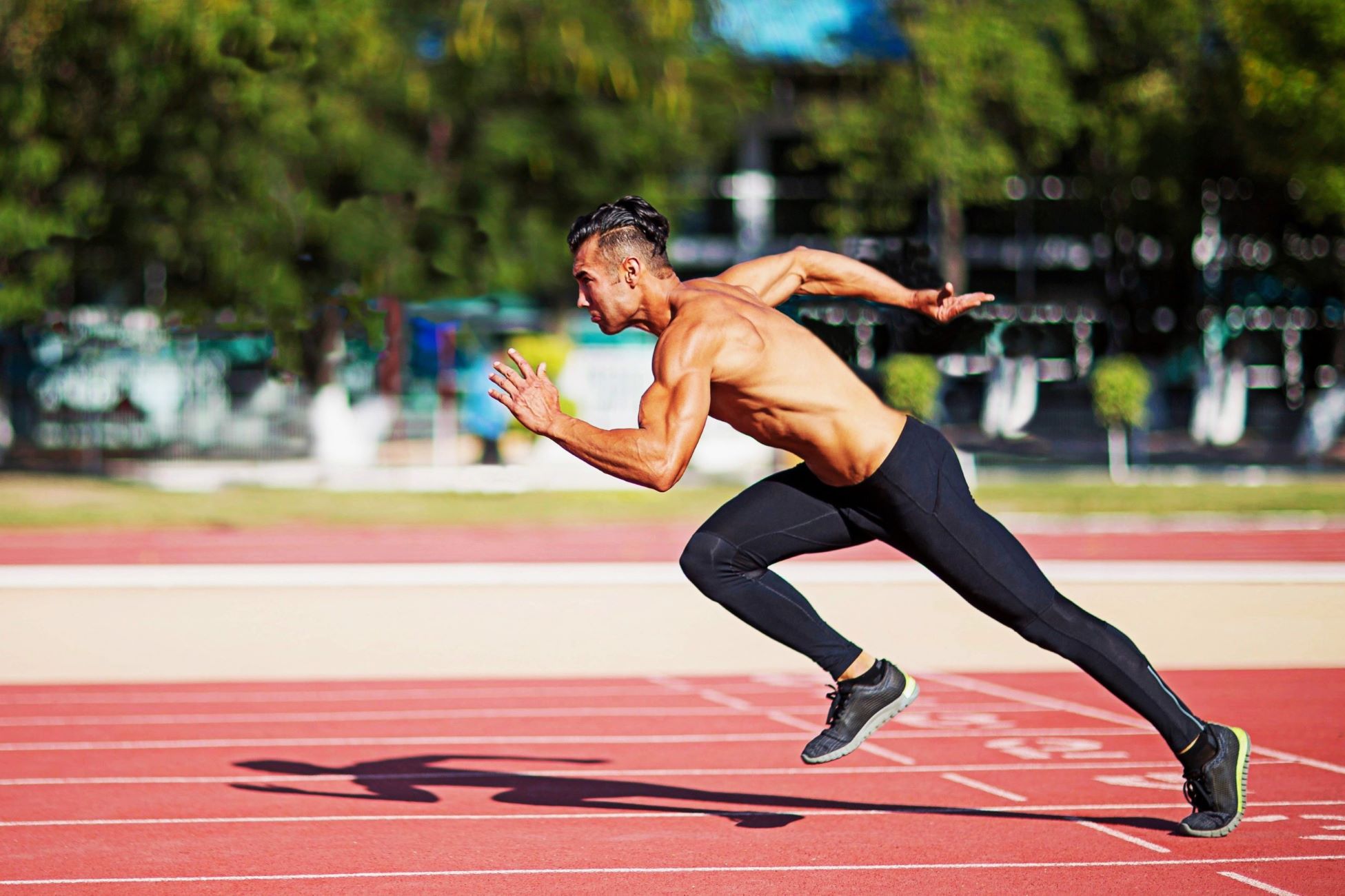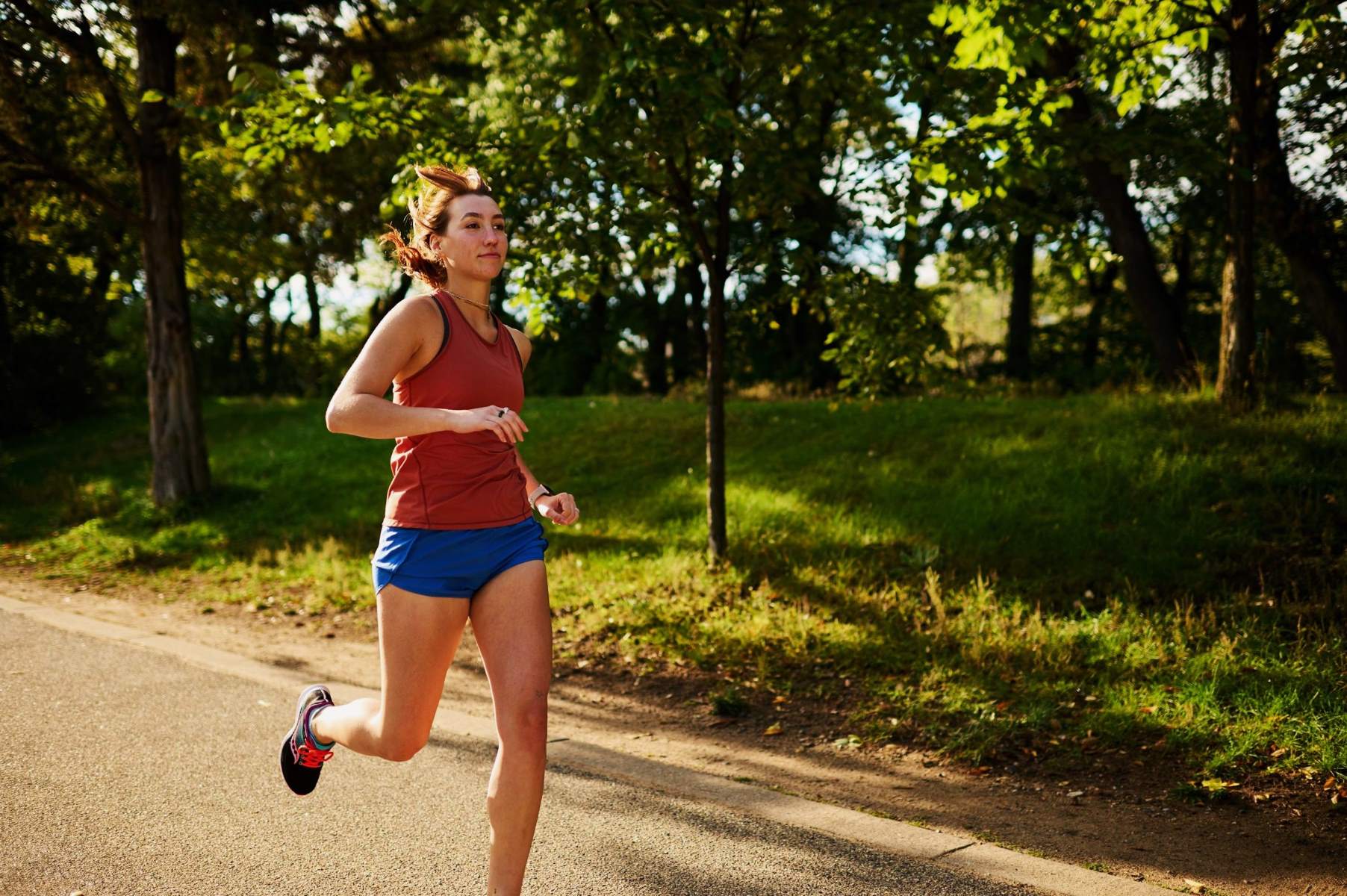Home>Training & Techniques>Running Techniques>Sprinting Technique: A Beginner’s Guide
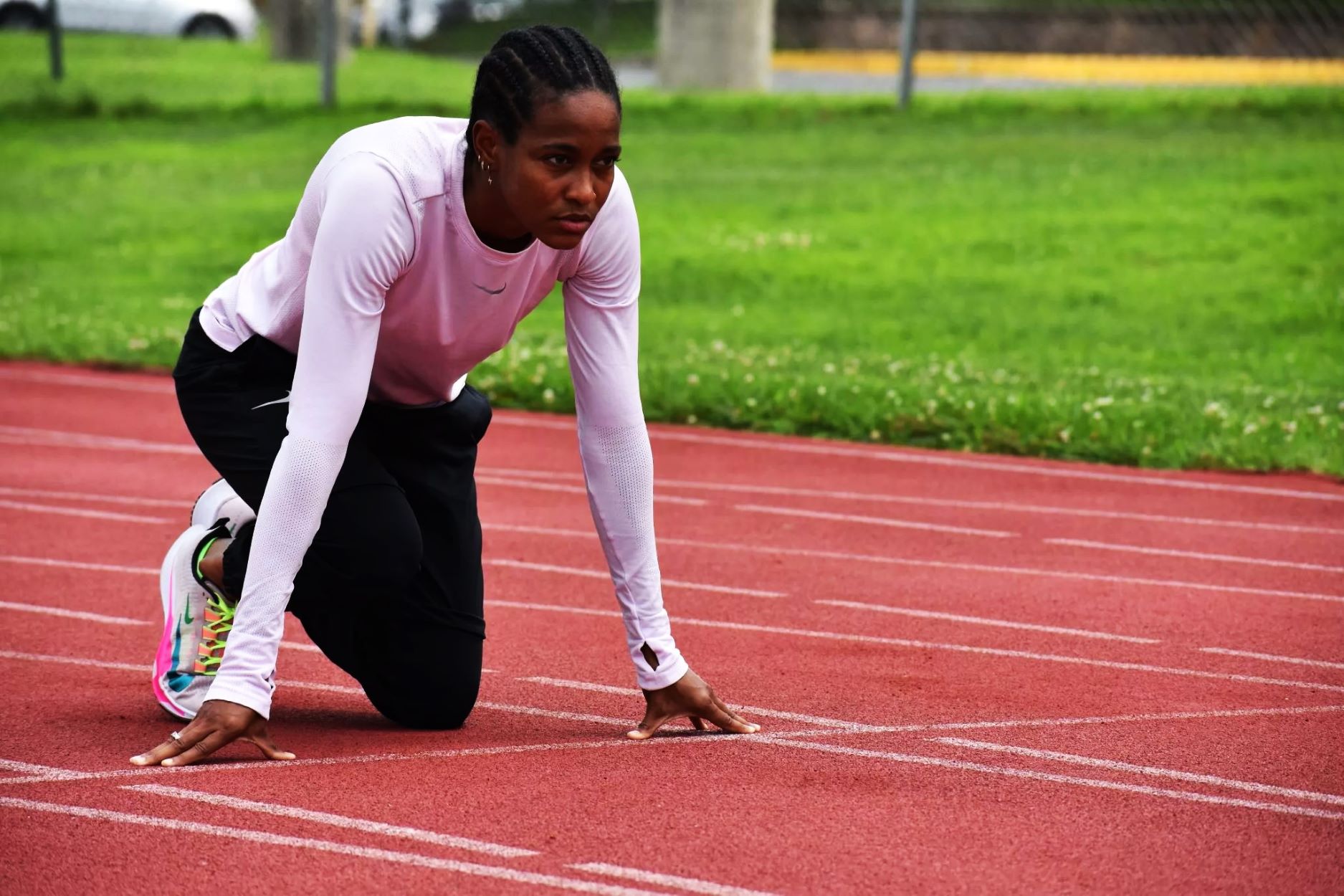

Running Techniques
Sprinting Technique: A Beginner’s Guide
Published: February 22, 2024
Learn the essential running techniques with our beginner's guide to sprinting. Improve your form and speed with expert tips and advice. Discover the secrets to mastering sprinting technique.
(Many of the links in this article redirect to a specific reviewed product. Your purchase of these products through affiliate links helps to generate commission for Therunningadvisor.com, at no extra cost. Learn more)
Table of Contents
Understanding the Basics of Sprinting
Sprinting is a fundamental aspect of various sports and an excellent form of cardiovascular exercise. Whether you're a competitive athlete or a fitness enthusiast, understanding the basics of sprinting is crucial for maximizing performance and preventing injuries.
Sprinting involves running at maximum speed over short distances, typically ranging from 60 to 400 meters. It requires explosive power, agility, and proper technique to achieve peak performance. Here are the key components to consider when delving into the basics of sprinting:
-
Acceleration: Sprinting begins with an explosive burst of speed, known as acceleration. During this phase, the body leans forward slightly, and the arms drive forcefully backward to propel the body forward. The initial steps are critical for gaining momentum and reaching top speed.
-
Maximum Velocity: Once acceleration is achieved, sprinters transition into the phase of maximum velocity. This is when the body reaches its top speed, and the focus shifts to maintaining this pace for the duration of the sprint. Proper form and efficient mechanics are essential for sustaining maximum velocity.
-
Deceleration: As the sprint nears its end, the body gradually decelerates to a stop. It's important to maintain control and balance during this phase to prevent injury and optimize performance.
-
Stride Frequency and Length: The frequency and length of each stride significantly impact sprinting performance. Striking the right balance between the two is crucial for maximizing speed and efficiency.
-
Energy Systems: Sprinting primarily relies on the anaerobic energy system, which fuels short bursts of intense activity. Understanding how to optimize this energy system through training and technique is vital for sprinting success.
By grasping these fundamental aspects of sprinting, individuals can lay a solid foundation for improving their technique and performance. Whether you're aiming to enhance your athletic abilities or simply seeking to boost your fitness level, mastering the basics of sprinting is a valuable pursuit.
Read more: Analyzing Usain Bolt’s Sprinting Technique
Proper Body Position and Posture
Proper body position and posture are fundamental elements of sprinting technique, playing a pivotal role in enhancing performance and minimizing the risk of injury. When sprinting, maintaining the correct body position and posture is essential for optimizing speed, power, and overall efficiency.
Head Position:
The head should be aligned with the spine, facing forward with the chin level to the ground. Keeping the head steady and focused ahead helps maintain balance and stability during the sprint. It also promotes a streamlined body position, reducing air resistance and facilitating smoother movement through the air.
Shoulder and Torso Alignment:
Maintaining a relaxed yet upright posture is crucial for sprinting success. The shoulders should be squared and relaxed, avoiding any unnecessary tension that can impede arm movement. The torso should be slightly leaned forward, allowing for a more powerful and explosive push-off during each stride. This forward lean also aids in propelling the body forward, optimizing acceleration.
Hip and Pelvic Position:
The hips play a significant role in generating power and driving the sprinter forward. Keeping the hips in a neutral position, neither excessively tilted forward nor backward, helps ensure optimal power transfer from the lower body to the ground. This alignment facilitates efficient stride mechanics and maximizes propulsion.
Leg and Foot Alignment:
Proper leg and foot alignment are essential for generating force and maintaining stability. The knees should be driving forward and upward with each stride, promoting powerful and explosive movements. Additionally, the foot strike should be quick and efficient, with the foot landing directly beneath the body's center of mass. This minimizes braking forces and maximizes forward propulsion, contributing to overall sprinting efficiency.
Overall Body Alignment:
Achieving a cohesive and streamlined body alignment is crucial for minimizing air resistance and maximizing forward momentum. When all the elements of body position and posture align harmoniously, the sprinter can move through the air with greater ease and efficiency, ultimately leading to improved performance.
Incorporating these principles of proper body position and posture into sprinting technique can significantly enhance an individual's speed, power, and overall performance. By focusing on maintaining the correct alignment of the head, shoulders, torso, hips, and legs, sprinters can optimize their biomechanics and unlock their full potential on the track.
Importance of Arm Movement
The significance of arm movement in sprinting cannot be overstated. While the legs are undoubtedly crucial for generating forward propulsion, the arms play a pivotal role in coordinating the body's movement, maximizing speed, and optimizing overall sprinting efficiency.
Coordination and Balance
Effective arm movement in sprinting serves as a counterbalance to the motion of the legs, promoting coordination and stability. As the legs drive forward and upward with each stride, the arms reciprocate in a synchronized manner, creating a harmonious rhythm that enhances the sprinter's balance and control. This coordinated movement minimizes lateral sway and rotational forces, allowing the sprinter to maintain a straight and efficient trajectory.
Power Generation
The arms act as powerful drivers of forward momentum, especially during the acceleration phase of sprinting. As the sprinter pushes off the starting blocks or initiates the sprint from a standing position, the forceful backward drive of the arms complements the explosive leg drive, propelling the body forward with increased power. This coordinated effort between the arms and legs maximizes the generation of horizontal force, essential for achieving rapid acceleration and reaching top speed.
Momentum Preservation
During the phase of maximum velocity, the arms contribute to preserving the sprinter's momentum and preventing deceleration. By maintaining a strong and purposeful arm swing, sprinters can counteract the natural tendency to slow down as fatigue sets in. The continuous and vigorous movement of the arms helps sustain the body's forward propulsion, allowing the sprinter to sustain peak speed for a longer duration.
Efficient Biomechanics
Optimal arm movement in sprinting complements the biomechanics of the lower body, enhancing overall efficiency. The arms should swing in a natural and rhythmic manner, with the elbows driving backward and the hands moving from cheek to hip level. This coordinated action facilitates a smooth and efficient transfer of energy, minimizing wasted motion and maximizing the conversion of muscular power into forward movement.
Psychological Focus
Beyond its physical impact, arm movement in sprinting also serves as a psychological focal point for maintaining rhythm and intensity. The deliberate and purposeful swing of the arms can help sprinters channel their mental focus, reinforcing a sense of determination and drive throughout the sprint. This psychological aspect of arm movement contributes to the overall mental fortitude and resilience required for peak sprinting performance.
In essence, the importance of arm movement in sprinting extends far beyond mere propulsion. It encompasses coordination, power generation, momentum preservation, biomechanical efficiency, and psychological focus, all of which are integral to achieving optimal sprinting performance. By recognizing the multifaceted role of arm movement and honing its execution, sprinters can unlock their full potential and elevate their capabilities on the track.
Read more: Open-Water Swimming: A Beginner’s Guide
Foot Placement and Stride Length
Foot placement and stride length are critical determinants of sprinting efficiency and performance. The strategic positioning of the feet and the optimal length of each stride directly impact a sprinter's speed, power, and overall biomechanics. Understanding the nuances of foot placement and stride length is essential for maximizing sprinting capabilities and achieving peak athletic prowess.
Foot Placement
The placement of the foot during each stride significantly influences a sprinter's ability to generate forward propulsion and minimize energy loss. When the foot strikes the ground, it should land directly beneath the body's center of mass, ensuring a quick and efficient transfer of energy. This strategic placement minimizes braking forces and maximizes the conversion of muscular power into forward momentum.
Moreover, maintaining a midfoot or forefoot strike pattern promotes a more rapid and explosive push-off, facilitating swift acceleration and sustained maximum velocity. By landing on the midfoot or forefoot, sprinters can capitalize on the elastic energy stored in the tendons and ligaments of the foot and ankle, enhancing the efficiency of each stride.
Stride Length
Achieving the optimal stride length is a delicate balance between maximizing ground coverage and maintaining rapid turnover. While longer strides can lead to greater distance covered per step, excessively long strides may compromise cadence and lead to overstriding, which can impede speed and increase the risk of injury.
Conversely, overly short strides may limit a sprinter's ability to reach their full speed potential and may result in wasted energy. Striking the right balance between stride length and turnover rate is crucial for achieving an efficient and powerful sprinting gait.
Sprinters should aim to extend their strides to the maximum length possible without sacrificing cadence or compromising their biomechanics. This can be achieved through targeted strength and flexibility training, which enhances the sprinter's ability to generate greater force with each stride while maintaining optimal turnover.
By honing their foot placement and stride length, sprinters can optimize their biomechanics, minimize energy loss, and unlock their full potential on the track. These foundational elements of sprinting technique lay the groundwork for enhanced speed, power, and overall performance, empowering athletes to push their limits and achieve new heights in their sprinting endeavors.
Breathing Techniques for Sprinting
Effective breathing techniques are often overlooked in sprinting, yet they play a crucial role in optimizing performance and endurance. Proper breathing not only ensures an adequate supply of oxygen to the muscles but also contributes to maintaining rhythm, focus, and overall efficiency during the sprint.
Read more: Running Gear Guide For Beginner Triathletes
Inhalation and Exhalation Rhythm
Establishing a rhythmic pattern of inhalation and exhalation is essential for sprinters. During the acceleration phase, deep inhalation through the nose followed by a forceful exhalation through the mouth can help maximize oxygen intake and promote explosive power generation. As the sprint transitions into the phase of maximum velocity, maintaining a steady and controlled breathing rhythm is vital for sustaining endurance and preventing premature fatigue.
Diaphragmatic Breathing
Engaging the diaphragm for breathing is a fundamental technique that supports optimal oxygen exchange and respiratory efficiency. Sprinters should focus on deep, diaphragmatic breathing, allowing the abdomen to expand during inhalation and contract during exhalation. This technique maximizes lung capacity and oxygen uptake, providing the muscles with the necessary fuel for sustained performance.
Relaxation and Control
Conscious efforts to remain relaxed while breathing can significantly impact sprinting performance. Tension in the chest and shoulders can impede the full expansion of the lungs and hinder the flow of oxygen. By consciously relaxing the upper body and maintaining controlled, purposeful breathing, sprinters can optimize their respiratory function and conserve energy for propulsion.
Synchronization with Stride Mechanics
Aligning breathing patterns with stride mechanics can enhance overall sprinting efficiency. Coordinating inhalation and exhalation with the rhythmic motion of the arms and legs promotes a harmonious and balanced sprinting gait. This synchronization helps prevent the onset of oxygen debt and supports the body's demand for continuous energy supply.
Mental Focus and Relaxation
Beyond its physiological benefits, focused breathing can serve as a tool for mental relaxation and concentration. By directing attention to the rhythm of their breath, sprinters can cultivate a sense of calm and focus, mitigating the effects of stress and anxiety. This mental composure contributes to sustained performance and resilience throughout the sprint.
Incorporating these breathing techniques into sprinting practice can yield significant improvements in performance and endurance. By prioritizing rhythmic breathing, diaphragmatic engagement, relaxation, synchronization with stride mechanics, and mental focus, sprinters can harness the power of proper breathing to elevate their sprinting capabilities and achieve peak athletic performance.
Common Mistakes to Avoid
Avoiding common mistakes is essential for sprinters looking to optimize their performance and minimize the risk of injury. By recognizing and addressing these pitfalls, athletes can refine their technique and elevate their sprinting capabilities. Here are some prevalent mistakes to steer clear of:
Overstriding
Overstriding occurs when a sprinter extends their stride length excessively, leading to a braking effect and reduced forward propulsion. This mistake not only hinders speed but also increases the risk of hamstring strains and other lower-body injuries. By focusing on maintaining an optimal stride length and turnover rate, sprinters can avoid the detrimental effects of overstriding.
Incorrect Body Position
Poor body positioning, such as leaning too far forward or backward, can compromise sprinting efficiency and balance. Leaning too far forward may impede proper arm movement and lead to premature fatigue, while leaning backward can limit acceleration and power generation. Maintaining a balanced and upright posture is crucial for optimizing sprinting biomechanics and minimizing energy wastage.
Inadequate Arm Movement
Neglecting the importance of arm movement can significantly hinder sprinting performance. Inadequate or erratic arm swing can disrupt the coordination between the upper and lower body, leading to decreased power generation and compromised balance. Sprinters should focus on maintaining a purposeful and synchronized arm movement to complement their leg drive and maximize forward propulsion.
Improper Breathing Technique
Ineffective breathing patterns, such as shallow breathing or breath-holding, can impair oxygen uptake and lead to premature fatigue. Sprinters must avoid tensing the chest and shoulders while breathing and instead focus on deep, diaphragmatic breathing to optimize respiratory efficiency and endurance.
Lack of Warm-Up and Cool Down
Failing to engage in proper warm-up and cool-down routines can increase the risk of muscle strains and other injuries. Adequate warm-up prepares the body for the demands of sprinting, while a thorough cool-down aids in muscle recovery and injury prevention. Neglecting these essential components can compromise sprinting performance and long-term athletic health.
By steering clear of these common mistakes and prioritizing proper technique, sprinters can enhance their speed, power, and overall performance on the track. Recognizing these pitfalls and actively addressing them through focused training and mindful practice is key to unlocking one's full potential as a sprinter.
Tips for Improving Sprinting Technique
-
Consistent Practice: Dedicate regular training sessions to sprinting technique. Consistency is key to ingraining proper form and mechanics, leading to significant improvements in speed and efficiency over time.
-
Strength and Flexibility Training: Incorporate strength and flexibility exercises into your regimen to enhance muscle power, joint mobility, and overall athleticism. A strong and flexible body is better equipped to execute optimal sprinting mechanics.
-
Focus on Explosive Starts: Place emphasis on explosive starts to maximize acceleration. Practice driving out of the starting blocks or stance with powerful leg and arm movements, propelling yourself forward with vigor.
-
Video Analysis: Utilize video analysis to assess your sprinting form. Recording your sprints allows for detailed review, identification of areas for improvement, and the implementation of corrective measures.
-
Coach or Mentor Guidance: Seek guidance from experienced coaches or mentors who can provide personalized feedback and tailored training programs. Their expertise can offer invaluable insights into refining your sprinting technique.
-
Plyometric Training: Integrate plyometric exercises to enhance explosive power and reactive strength. Plyometrics, such as bounding and box jumps, can significantly improve the force production and efficiency of each stride.
-
Interval Training: Incorporate interval training to simulate the demands of sprinting. Alternating between periods of high-intensity sprints and active recovery promotes cardiovascular conditioning and prepares the body for the rigors of sprinting.
-
Proper Nutrition and Hydration: Maintain a balanced diet and stay adequately hydrated to support optimal muscle function and recovery. Proper nutrition and hydration are essential for sustaining energy levels and promoting overall athletic performance.
-
Mental Preparation: Cultivate a focused and resilient mindset. Mental preparation is integral to sprinting success, as it enhances concentration, confidence, and the ability to push through physical barriers.
-
Rest and Recovery: Prioritize adequate rest and recovery to allow the body to adapt and grow stronger. Overtraining can lead to diminished performance and increased injury risk, underscoring the importance of proper recovery.
By integrating these tips into your training and mindset, you can elevate your sprinting technique and unlock your full potential as a sprinter. Continuous refinement and dedication to honing your skills will pave the way for enhanced speed, power, and overall performance on the track.


